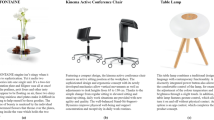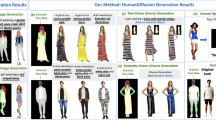Abstract
Companies use banners extensively to promote their products, and the intelligent automatic synthesis of banners is a challenging event. Under the premise of inputting only a small amount of information such as product, text and size, it can synthesize styles with high freedom and richness, but at the same time, it must satisfy the design specifications of advertisers for advertising and scenes. We propose an intelligent banner design framework that strikes a balance between creative freedom and design rules, called smartbanner. Smartbanner consists of planner, actuator, adjuster and generator. The banner is synthesized through the combined framework, which fully liberates the designer and reduces the threshold and cost of design. It increases the click-through rate by 30%, improves the human efficiency of designers by 500% under the condition of ensuring the quality of creation, and synthesizes hundreds of millions of pictures in batches throughout the year.











Similar content being viewed by others
Data availability
Since the design resources of the template library involve company assets, the online creative refinement data involves privacy issues, participants of this study did not agree for their data to be shared publicly, so supporting data is not available.
References
Chen J, Xu J, Jiang G et al (2021) Automated creative optimization for e-commerce advertising[C]. Proceedings of the web conference 2021, pp 2304–2313
Devlin J, Chang MW, Lee K et al (2018) Bert: pre-training of deep bidirectional transformers for language understanding[J]. arXiv preprint arXiv:1810.04805
Guo S, Jin Z, Sun F et al (2021) Vinci: an intelligent graphic design system for generating advertising posters[C]. Proceedings of the 2021 CHI conference on human factors in computing systems, pp 1–17
Hua XS (2018) The city brain: Towards real-time search for the real-world[C]. The 41st international ACM SIGIR conference on research & development in information retrieval, pp 1343–1344
Jahanian A (2016) Automatic design of self-published media: a case study of magazine covers[M]. Quantifying aesthetics of visual design applied to automatic design. Springer, Cham, pp 69–99
Ke G, Meng Q, Finley T et al (2017) Lightgbm: a highly efficient gradient boosting decision tree[J]. Adv Neural Inf Process Syst 30
Li J, Yang J, Hertzmann A et al (2019) Layoutgan: generating graphic layouts with wireframe discriminators[J]. arXiv preprint arXiv:1901.06767
Liu H, Lu J, Yang H et al (2020) Category-specific CNN for visual-aware CTR prediction at JD. com[C]. Proceedings of the 26th ACM SIGKDD international conference on knowledge discovery & data mining, pp 2686–2696
Lok S, Feiner S (2001) A survey of automated layout techniques for information presentations[J]. Proceedings of SmartGraphics, 2001, pp 61–68
Mackinlay J (1988) Applying a theory of graphical presentation to the graphic design of user interfaces[C]. Proceedings of the 1st annual ACM SIGGRAPH symposium on user interface software, pp 179–189
O’Donovan P, Agarwala A, Hertzmann A, (2015) Designscape: design with interactive layout suggestions[C]. Proceedings of the 33rd annual ACM conference on human factors in computing systems, pp 1221–1224
Qiang YT, Fu YW, Yu X et al (2019) Learning to generate posters of scientific papers by probabilistic graphical models[J]. J Comput Sci Technol 34(1):155–169
Radford A, Metz L, Chintala S (2015) Unsupervised representation learning with deep convolutional generative adversarial networks[J]. arXiv preprint arXiv:1511.06434
Tabata S, Yoshihara H, Maeda H et al (2019) Automatic layout generation for graphical design magazines[M]. ACM SIGGRAPH 2019 posters, pp 1–2
Tang Y, Huang J, Yao M et al (2019) A review of design intelligence: progress, problems, and challenges[J]. Front Inform Technol Electron Eng 20(12):1595–1617
Todi K, Weir D, Oulasvirta A (2016) Sketchplore: sketch and explore with a layout optimiser[C]. Proceedings of the 2016 ACM conference on designing interactive systems, pp 543–555
Vempati S, Malayil KT, Sruthi V et al (2020) Enabling hyper-personalisation: automated ad creative generation and ranking for fashion e-commerce[M]. Fashion recommender systems. Springer, Cham, pp 25–48
Yang X, Mei T, Xu YQ et al (2016) Automatic generation of visual-textual presentation layout[J]. ACM Trans Multimedia Comput Commun Appl 12(2):1–22
Zhang Y, Hu K, Ren P et al (2017) Layout style modeling for automating banner design[C]. Proceedings of the on thematic workshops of ACM multimedia 2017, pp 451–459
Zheng X, Qiao X, Cao Y et al (2019) Content-aware generative modeling of graphic design layouts[J]. ACM Trans Graph 38(4):1–15
Author information
Authors and Affiliations
Corresponding author
Ethics declarations
Conflict of interest
The authors declared that they have no conflicts of interest to this work.
Additional information
Publisher’s note
Springer Nature remains neutral with regard to jurisdictional claims in published maps and institutional affiliations.
Rights and permissions
Springer Nature or its licensor (e.g. a society or other partner) holds exclusive rights to this article under a publishing agreement with the author(s) or other rightsholder(s); author self-archiving of the accepted manuscript version of this article is solely governed by the terms of such publishing agreement and applicable law.
About this article
Cite this article
Li, G., Yang, X. Smartbanner: intelligent banner design framework that strikes a balance between creative freedom and design rules. Multimed Tools Appl 82, 18653–18667 (2023). https://doi.org/10.1007/s11042-022-14138-7
Received:
Revised:
Accepted:
Published:
Issue Date:
DOI: https://doi.org/10.1007/s11042-022-14138-7




